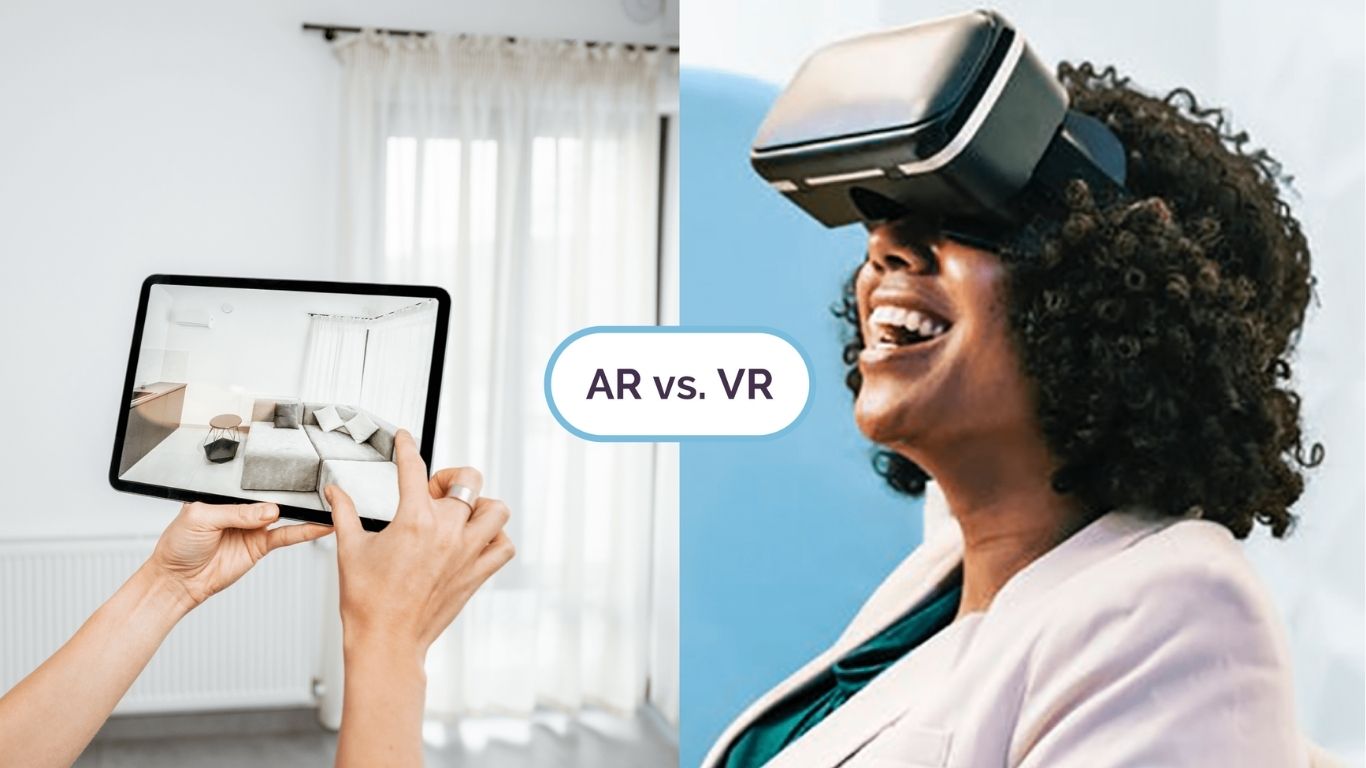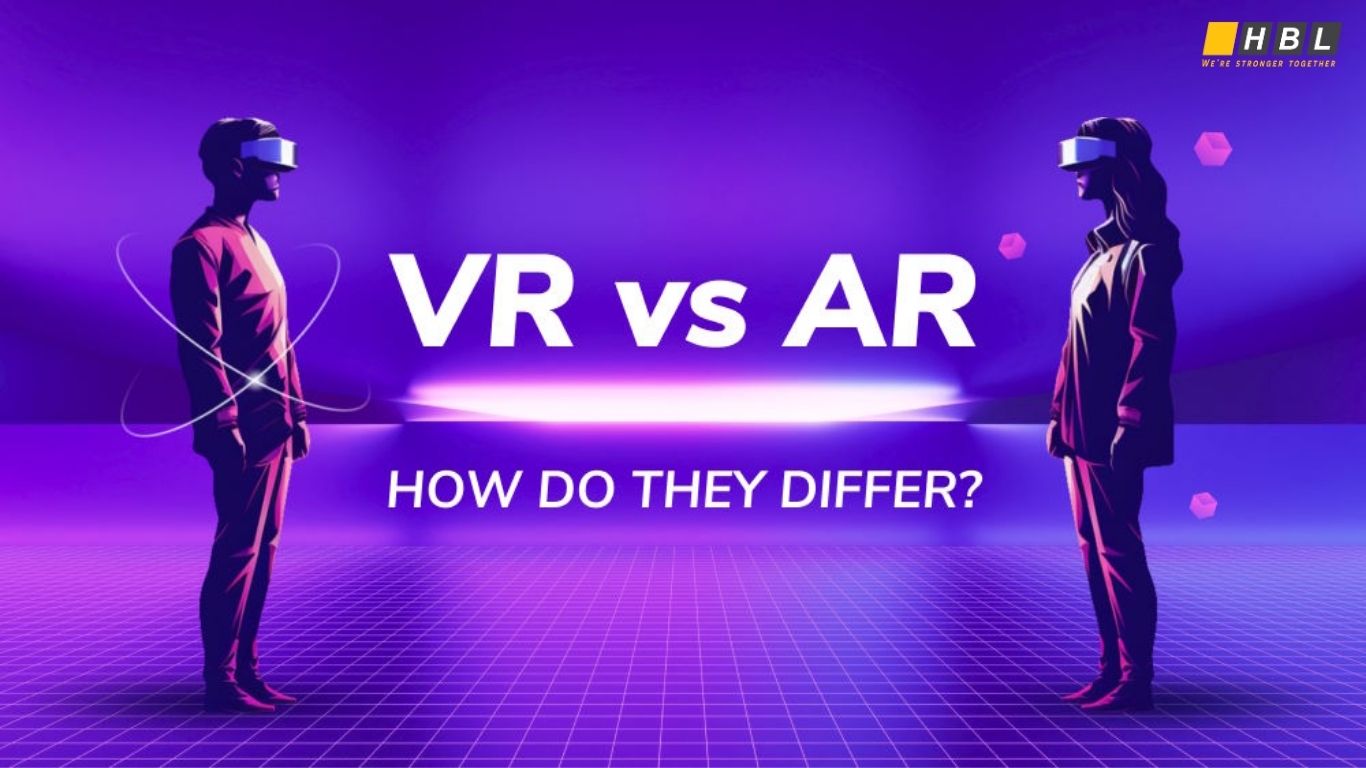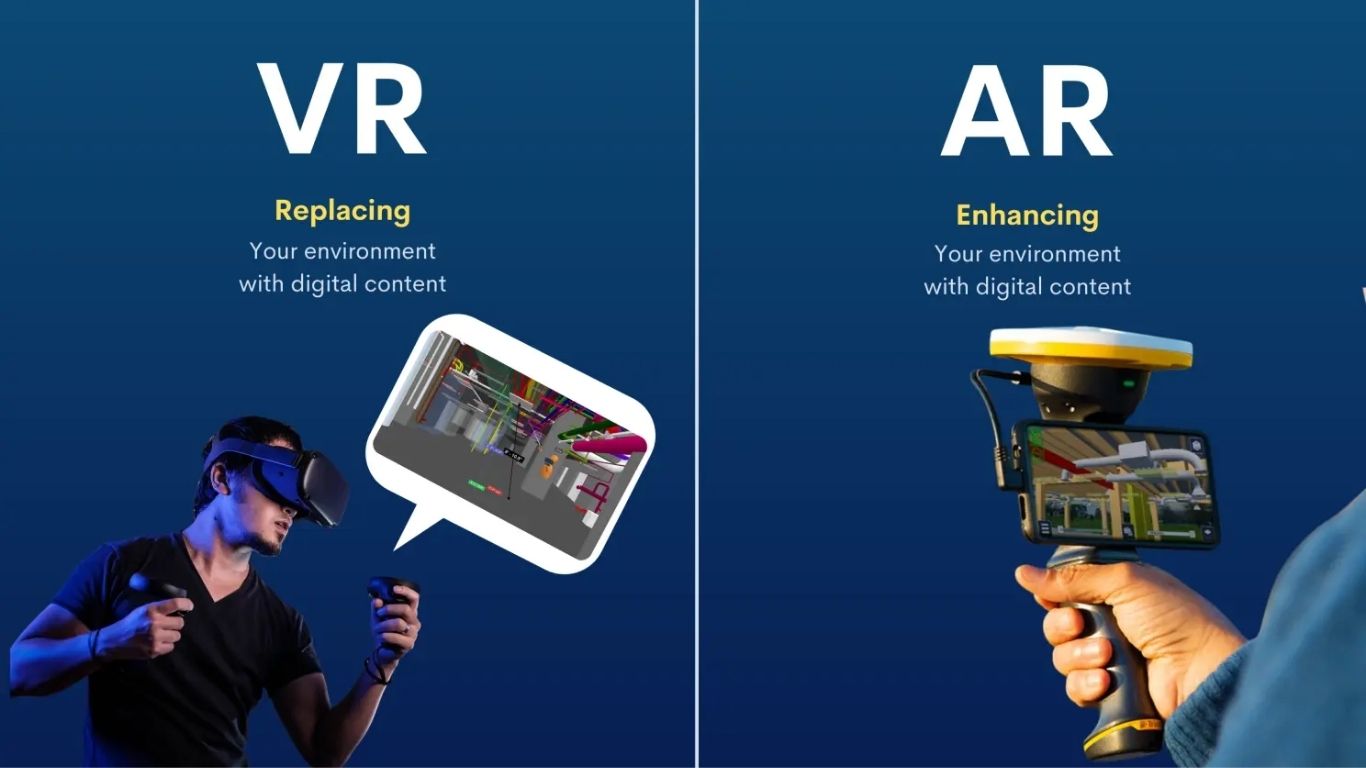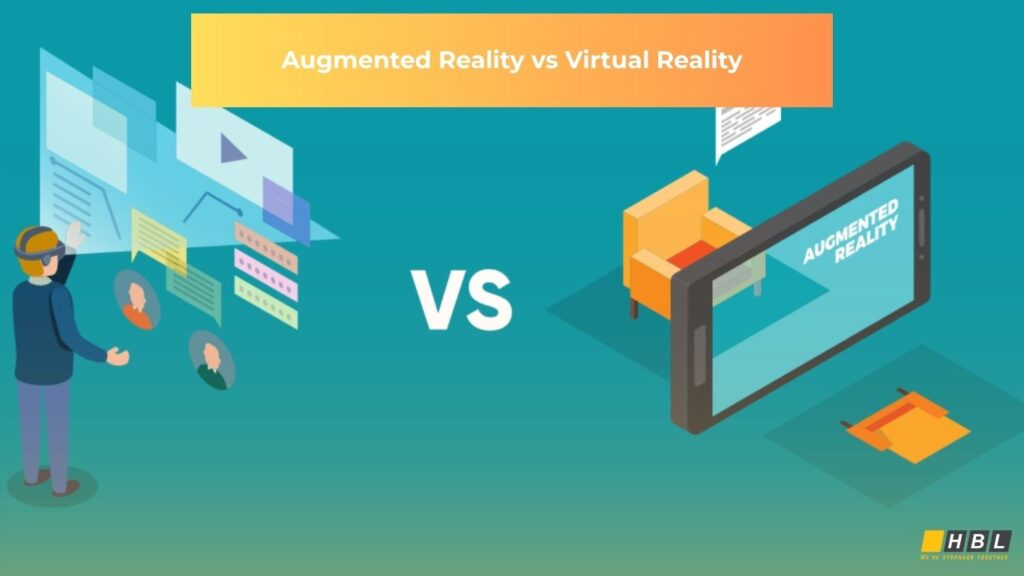In today’s digital-first landscape, immersive technologies are rapidly moving from novelty to necessity. Two of the most discussed are Augmented Reality (AR) and Virtual Reality (VR). Searching for “augmented vs virtual reality” or “difference between AR vs VR” becomes more common as businesses and consumers ask: What is augmented reality vs virtual reality? and What is virtual reality vs augmented reality?
This article explores:
- Clear definitions of AR vs VR
- The key differences between them (augmented reality vs virtual)
- Use-cases across industries (retail, training, marketing, real-estate)
- Decision-criteria for business adoption
- Future trends and considerations (security, UX, cost)
- Why choosing the right partner matters — and how HBLAB can help
By going beyond the surface, we’ll aim to provide more value than standard “AR vs VR” comparison posts, helping you understand not just “what” and “why”, but how to evaluate and implement them strategically.
What is Augmented Reality (AR)?
Augmented Reality (AR) overlays digital content (images, sounds, graphics, 3D objects) onto the user’s view of the physical world, in real-time. The user still sees “their world” but enhanced.
Key characteristics of AR:
- Works on devices like smartphones, tablets, AR glasses.
- Enhances actual reality rather than replacing it.
- Common use-cases: retail (virtual try-on, furniture placement), training & maintenance (overlay instructions), marketing experiences.
Example: A smartphone app that lets you see how a sofa will look in your living room by placing a 3D model into your camera view is AR in action.

What is Virtual Reality (VR)?
Virtual Reality (VR) replaces the physical world entirely with a computer-generated simulation. The user is immersed in a virtual environment and typically uses a headset or other gear.
Key characteristics of VR:
- Requires dedicated hardware (VR headset, controllers, sometimes haptic gear).
- Isolates the user from the real world and immerses them in a different environment (realistic or fictional).
- Use-cases: immersive training (e.g., pilots, surgeons), virtual showrooms, entertainment/gaming.
Example: A user wearing a VR headset can walk through a virtual house or perform a simulated surgery in a fully digital environment.
Augmented Reality vs Virtual Reality: The Core Differences
Let’s put side-by-side the key distinctions between AR and VR:
Also worth noting: AR augments reality; VR replaces reality.

Why These Differences Matter for Business (“AR vs VR for Enterprises”)
Understanding how AR and VR differ isn’t just academic — it has practical implications for businesses deciding which way to go, budgeting, rollout strategy, ROI expectations, and user adoption.
1. Cost & Accessibility
- AR solutions often leverage existing devices (smartphones/tablets) and can scale more easily.
- VR typically demands more hardware investment (headsets, controllers, dedicated space) and often specialized content development.
- That means AR can offer faster time-to-value for many use-cases, especially in retail, service/maintenance, field-work.
2. User Experience & Adoption
- Because AR keeps users in their real context, there’s typically less friction in adoption.
- VR requires users to invest time, adapt to the environment, and often deal with motion sickness or hardware reluctance.
3. Use-Case Fit
- Want to overlay instructions for a technician out in the field? AR is likely the better fit.
- Want to train surgeons in a fully realistic simulated environment? Then VR may be the right choice.
- Many businesses will adopt a hybrid approach (for example, AR for customer-facing overlays, VR for internal training).
4. ROI & Metrics
- AR can drive engagement, reduce errors, enhance customer experience (for example, virtual try-on leads to higher conversion).
- VR’s ROI may come via cost savings in training, simulation of expensive real-world scenarios, or entirely new business experiences (virtual showrooms).
5. Content & Technical Complexity
- AR content often needs alignment with physical world markers, sensors, camera calibration.
- VR content often needs full 3D modelling of environments, physics simulation, interactive elements — so complexity is higher.
Use Cases & Industry Applications
Here are some concrete examples of how AR vs VR are being leveraged.
Retail & eCommerce
- AR: A furniture retailer lets customers “place” a 3D sofa in their living room via a smartphone camera (product visualisation)
- VR: A retailer offers a fully immersive virtual showroom where users walk through an entire store virtually to explore products.
- Outcome: AR helps reduce returns, boost conversion by giving customers more confidence.
Training & Education
- AR: Field technician wearing AR glasses receives step-by-step overlay instructions while servicing equipment.
- VR: Medical students perform a simulated surgery in a virtual operating theatre; safety, repetition, realism without risk.
Real Estate & Architecture
- AR: Prospective buyers point their phone at a building site and see overlays of proposed changes, interior finishes, furniture placement.
- VR: Buyers put on a headset and walk virtually through a fully built, 3-D model of a property before construction completes.
Marketing & Customer Experience
- AR: Marketing campaigns use digital overlays on real-world objects (for example, interactive billboards, AR filters).
- VR: Brands create immersive brand experiences (virtual concerts, immersive events).
Other: Healthcare, Manufacturing, Field Service
- AR: Maintenance of complex machinery via overlays.
- VR: Manufacturing training or simulations of high-risk environments (e.g., oil-rig, mining) safely.
Decision Framework: When to Choose AR, When to Choose VR?
Here’s a practical checklist for business leaders or technical planners:
- Goal – If the goal is to enhance the real world (overlay, assist, visualise) → AR. If the goal is immersion, simulation, full replacement → VR.
- Hardware & budget – Do you have resources to invest in dedicated VR headsets and support? If not, AR may offer better ROI.
- User environment – Are users mobile, in the field, or interacting via smartphone? AR fits well. Are users in a controlled environment such as a training centre? VR may work.
- Content complexity – VR requires more complex content creation (3D environments, controllers, tracking). AR may be faster to deploy if you overlay content on existing scenes.
- Adoption & comfort – Are your users comfortable with headsets, controllers, immersive tech? Is your audience more mobile/user friendly via phone?
- Scalability & maintenance – AR may scale more broadly via mobile; VR may require more maintenance, space, hardware lifecycle management.
- ROI timeline – If you need faster business outcomes (e.g., marketing, sales, customer engagement), AR may deliver sooner. VR may pay off long-term via training/simulation savings.
- Security/Integration – For enterprise AR/VR, consider data security, integration with existing systems (CRM, ERP), and compliance (especially in regulated industries).
Emerging Trends & What to Watch For
As both AR and VR evolve, some trends and considerations will shape their adoption and success.
Blending realities – Mixed Reality (MR) & the Continuum
Beyond AR vs VR, there is the «reality-virtuality continuum» where experiences mix real and virtual worlds. Mixed Reality (MR) is gaining momentum — this means businesses may not choose strictly AR or VR, but a hybrid.
SEO, Content & User Experience for AR/VR
From a digital-marketing perspective, AR is increasingly relevant for content, search and engagement. For example, mobile AR experiences, visual search, and immersive content can enhance digital presence.
Privacy, Security & Technical Challenges
As immersive tech becomes more integrated, issues of data collection, user safety (motion sickness in VR), device compatibility, and security become more acute.
Hardware Evolution & Lowering Costs
Headsets are becoming lighter, cheaper; AR glasses are evolving; smartphone AR capabilities are expanding. This means the barrier to entry is lowering.
Integration with AI & the Metaverse
AR and VR will increasingly integrate with AI (for immersive interactions, analytics), Web3/metaverse platforms, and deeper behavioural data.
Augmented Reality vs Virtual Reality: FAQs
Q 1. Is AR better than VR?
Not inherently — “better” depends on your business objective. AR is better when you want to enhance the real world; VR is better when you need full immersion.
Q 2. Can AR and VR be used together?
Yes — many organisations adopt both, depending on context. For instance, AR for customer-facing overlays, VR for internal training.
Q 3. Which one has lower cost?
Generally AR requires less specialised hardware (especially if relying on smartphones/tablets) and may cost less to deploy initially. VR often has higher hardware/content costs.
Q 4. Which one delivers faster ROI?
Often AR, because it can be deployed quicker, scale via existing devices, and integrate with consumer experiences such as e-commerce.
Q 5. What about user adoption?
AR tends to have lower friction (mobile friendly) while VR requires users to don headsets and may be less accessible.

Why Partnering with HBLAB Matters for AR/VR Projects
If you’re evaluating immersive technology projects (AR or VR) for your business, selecting the right partner is critical. Here’s why HBLAB stands out:
- With over 630+ engineers and project managers globally, HBLAB brings a substantial talent pool to your AR/VR initiative.
- Headquarters in Vietnam with branches in Australia, Singapore, Japan, Korea — enabling local language support (English, Japanese, Korean) and global delivery
- More than 30% senior-level employees with five-plus years’ experience handling complex projects (especially in enterprise and emerging tech).
- Flexible collaboration models: BOT, Offshore, Onsite, Dedicated Teams — allowing you to tailor based on budget, risk, timeline.
- Cost-efficient outsourcing: quality talent at up to 30% lower cost compared with many domestic markets.
- Broad skill-set: AR/VR development, AI, low-code platforms, mobile/web apps, enterprise integrations.
- Strong focus on security and process maturity: certified to CMMI Level 3 among other standards.
- Real experience: HBLAB’s service listing includes “AR-VR / Map Augmented Experience” among their offerings.
How HBLAB aligns with your AR/VR strategy
- Early-stage consulting: validating whether AR or VR (or both) fits your business need, user base, budget.
- Proof of concept & pilot: deploying small-scale AR/VR test to gauge user engagement, metrics, ROI.
- Full-scale implementation: hardware/software integration, content creation (3D models, environments), mobile/tablet apps, headset experiences, backend analytics.
- Ongoing support & scaling: device lifecycle, analytics integration, user adoption, updates, cross-platform compatibility.
If you’re ready to explore how AR vs VR can transform your business, HBLAB is positioned to deliver — from strategy through deployment to scaling.
Summary & Final Thoughts
In summary:
- Augmented Reality (AR) overlays digital content on the real world.
- Virtual Reality (VR) immerses users in a fully digital world.
- Choosing between AR vs VR (or using both) depends on your business goal, budget, user environment, hardware readiness, and content complexity.
- Both technologies offer significant business value (enhanced engagement, reduced error/training cost, new experience models) but need appropriate alignment and planning.
- As these technologies evolve, factors like hardware cost, content creation complexity, security and user adoption remain central.
- Partnering with an experienced development and outsourcing firm like HBLAB helps de-risk your AR/VR initiative, accelerate time to value, and align with global standards.
Whether you’re exploring “augmented vs virtual reality”, “what is augmented reality vs virtual reality”, or “difference between AR vs VR”, this guide aims to give you a deeper foundation — not just the surface comparison, but the strategic view to make decisions.
Call to Action
Ready to explore how AR or VR can elevate your business? Whether you’re in retail, manufacturing, education, or enterprise-level digital transformation — speak to HBLAB. Their global team is poised to help you assess, design, build and scale immersive experiences tailored to your business needs.
Contact HBLAB today and take the next step in your immersive technology roadmap.
CONTACT US FOR A FREE CONSULTATION!
Read more:
– Artificial intelligence customer service: Complete Guide to Implementation & ROI
– AI and Machine Learning Trends: The Solid Basis for Enterprise Transformation




